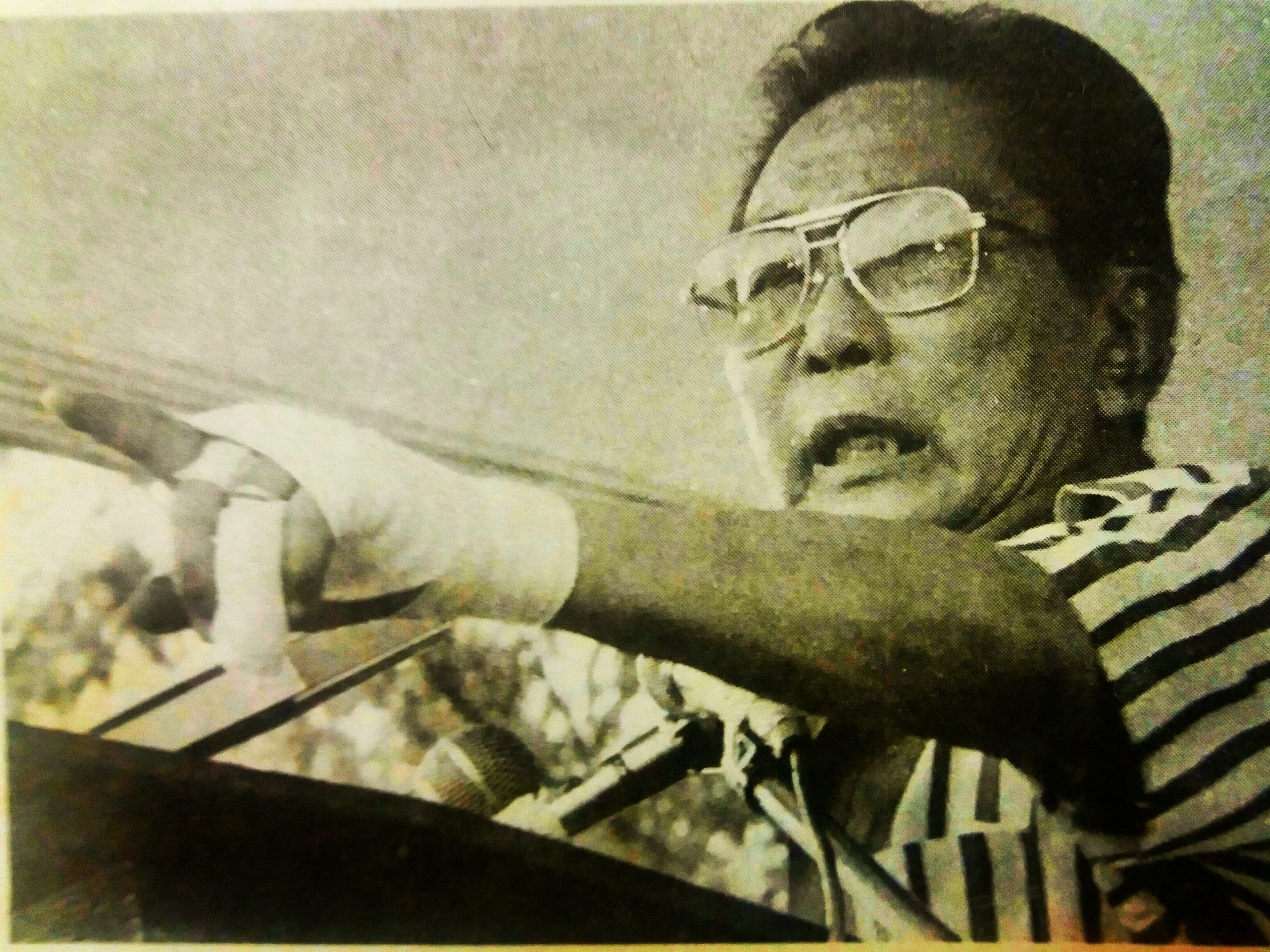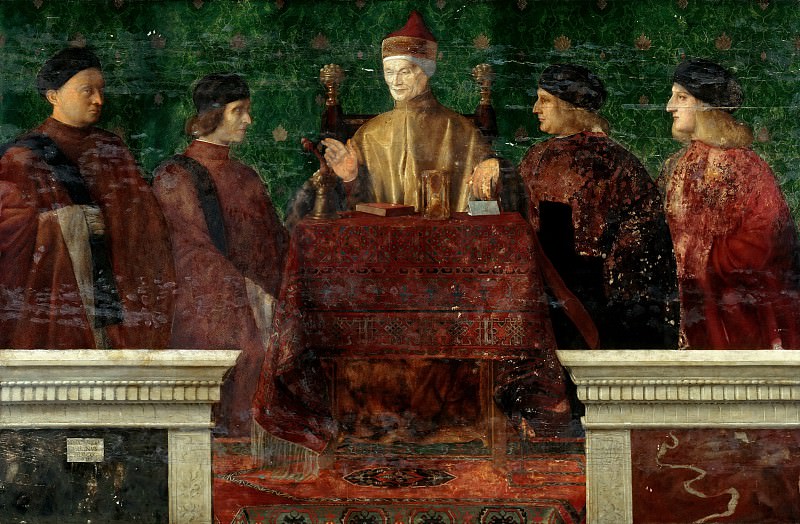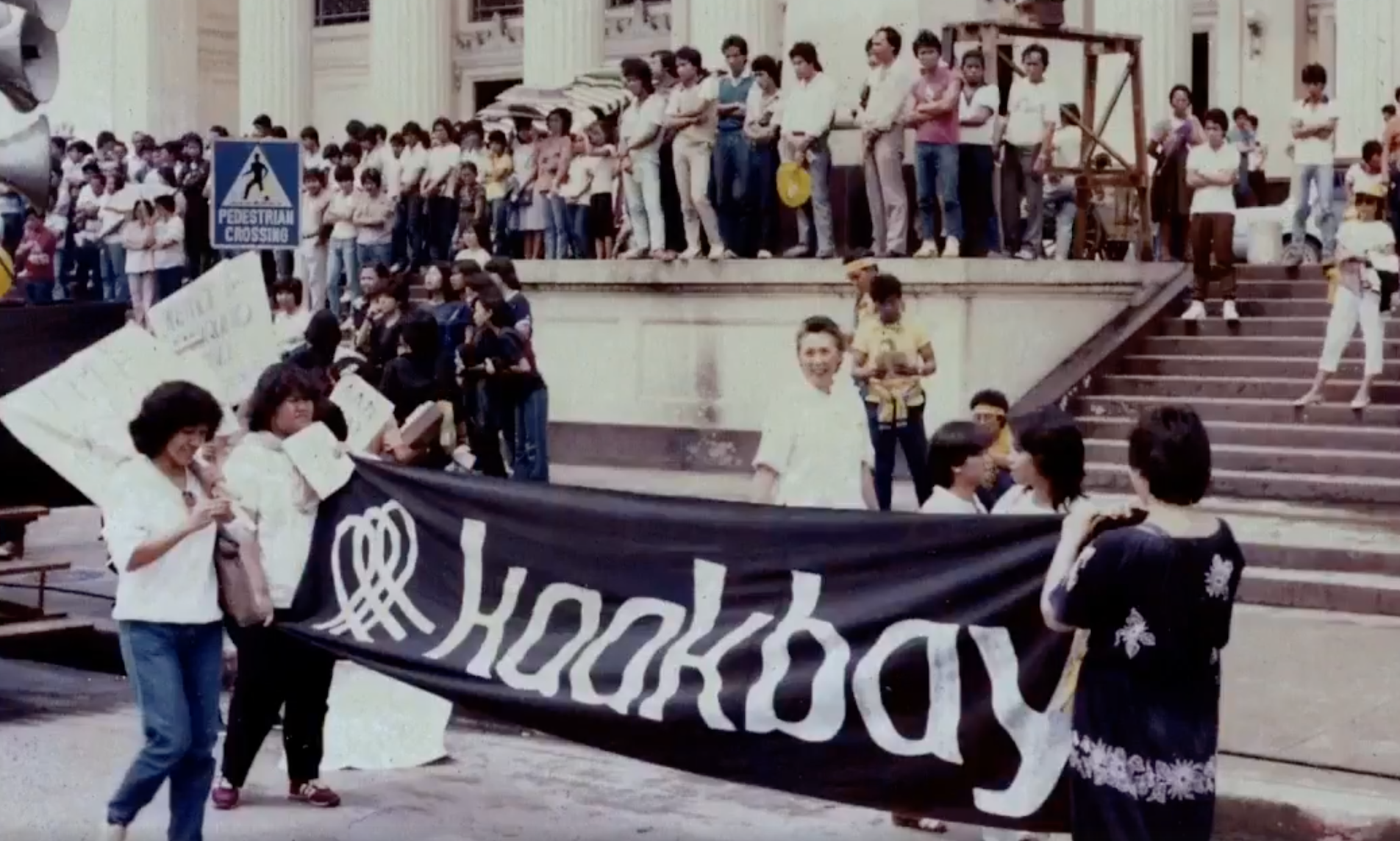|
Marcos Family
The Marcos family ( , , ) is a political family in the Philippines. They have established themselves in the country's politics, having established a political dynasty that traces its beginnings to the 1925 election of Mariano Marcos to the Philippine House of Representatives as congressman for the second district of Ilocos Norte; reached its peak during the 21-year rule of Ferdinand Marcos as president of the Philippines that included his 14-year dictatorship beginning with the declaration of Martial Law throughout the country; and continues today with the political careers of Imelda Marcos, Imee Marcos, Sandro Marcos and reached its peak again with the presidency of Ferdinand Marcos Jr. Imee Marcos has attributed the continued reign of the Marcos family to the inherent feudalism of Philippine culture. Although nominally democratic, Philippine society effectively blocks individual Philippine citizens from having much political power, forcing them to be dependent on powerful fi ... [...More Info...] [...Related Items...] OR: [Wikipedia] [Google] [Baidu] |
Political Family
A political family (also referred to as political dynasty) is a family in which multiple members are involved in politics — particularly electoral politics. Members may be related by blood or marriage; often several generations or multiple siblings may be involved. A royal family or dynasty in a monarchy is generally considered to not be a "political family," although the later descendants of a royal family have played political roles in a republic (such as the Arslan family of Lebanon). A family dictatorship is a form of dictatorship that operates much like an absolute monarchy, yet occurs in a nominally republican state. United States In the United States, many political families (having at least two generations serving in political office) have arisen since the country's founding. Presidential Several presidential families produced multiple generations of members who devoted at least part of their working lives to public service. *The Adams family The Adams family wa ... [...More Info...] [...Related Items...] OR: [Wikipedia] [Google] [Baidu] |
Philippine House Of Representatives
The House of Representatives of the Philippines ( fil, Kapulungan ng mga Kinatawan ng Pilipinas, italic=unset, ''Kamara'' or ''Kamara de Representantes'' from the Spanish word ''cámara'', meaning "chamber") is the lower house of Congress, the bicameral legislature of the Philippines, with the Senate of the Philippines as the upper house. The lower house is usually called Congress, although the term collectively refers to both houses. Members of the House are officially styled as ''representative'' (''kinatawan'') and sometimes informally called ''congressmen'' or ''congresswomen'' (''mga kongresista'') and are elected to a three-year term. They can be re-elected, but cannot serve more than three consecutive terms except with an interruption of one term like the senate. Around eighty percent of congressmen are district representatives, representing a particular geographical area. The 19th Congress has 253 congressional districts. Party-list representatives are elected throug ... [...More Info...] [...Related Items...] OR: [Wikipedia] [Google] [Baidu] |
EDSA People Power Revolution
The People Power Revolution, also known as the EDSA Revolution or the February Revolution, was a series of popular demonstrations in the Philippines, mostly in Metro Manila, from February 22 to 25, 1986. There was a sustained campaign of civil resistance against regime violence and electoral fraud. The nonviolent revolution led to the departure of Ferdinand Marcos, the end of his 20-year dictatorship and the restoration of democracy in the Philippines. It is also referred to as the Yellow Revolution due to the presence of yellow ribbons during demonstrations (in reference to the Tony Orlando and Dawn song "Tie a Yellow Ribbon Round the Ole Oak Tree") as a symbol of protest following the Assassination of Benigno Aquino Jr., assassination of Filipino senator Benigno "Ninoy" Aquino, Jr. in August 1983 upon his return to the Philippines from exile. It was widely seen as a victory of the people against two decades of presidential rule by President Marcos, and made news headlin ... [...More Info...] [...Related Items...] OR: [Wikipedia] [Google] [Baidu] |
Julio Nalundasan
Julio Nalundasan (July 21, 1894 – September 20, 1935) was a Filipino politician who was one of the political rivals of Ilocos Norte politician Mariano Marcos who was the father of Ferdinand Marcos (who later became the tenth President of the Philippines). Nalundasan was killed by a sniper at his home in 1935, the day after beating Marcos for the second time in elections for the office of representative for the second district of Ilocos Norte. Mariano Marcos' son, Ferdinand, and brother-in-law, Quirino Lizardo, were later convicted for the murder. However, the conviction was overturned by the Supreme Court of the Philippines, through a decision by Associate Justice Jose P. Laurel (who, like Marcos, also became president). External linksG.R. No. L-47388- the Supreme Court A supreme court is the highest court within the hierarchy of courts in most legal jurisdictions. Other descriptions for such courts include court of last resort, apex court, and high (or final) court of ... [...More Info...] [...Related Items...] OR: [Wikipedia] [Google] [Baidu] |
Philippine Daily Inquirer
The ''Philippine Daily Inquirer'' (''PDI''), or simply the ''Inquirer'', is an English-language newspaper in the Philippines. Founded in 1985, it is often regarded as the Philippines' newspaper of record. The newspaper is the most awarded broadsheet in the Philippines and the multimedia group, called The Inquirer Group, reaches 54 million people across several platforms. History The ''Philippine Daily Inquirer'' was founded on December 9, 1985, by publisher Eugenia Apóstol, columnist Max Solivén, together with Betty Go-Belmonte during the last days of the regime of President Ferdinand Marcos, becoming one of the first private newspapers to be established under the Marcos regime. The ''Inquirer'' succeeded the weekly ''Philippine Inquirer'', created in 1985 by Apostol to cover the trial of 25 soldiers accused of complicity in the assassination of opposition leader Ninoy Aquino at Manila International Airport on August 21, 1983. Apostol also published the '' Mr. & Ms. S ... [...More Info...] [...Related Items...] OR: [Wikipedia] [Google] [Baidu] |
People Power Revolution
The People Power Revolution, also known as the EDSA Revolution or the February Revolution, was a series of popular Demonstration (people), demonstrations in the Philippines, mostly in Metro Manila, from February 22 to 25, 1986. There was a sustained campaign of civil resistance against regime violence and electoral fraud. The nonviolent revolution led to the departure of Ferdinand Marcos, the end of his 20-year dictatorship and the restoration of democracy in the Philippines. It is also referred to as the Yellow Revolution due to the presence of yellow ribbons during demonstrations (in reference to the Tony Orlando and Dawn song "Tie a Yellow Ribbon Round the Ole Oak Tree") as a symbol of protest following the Assassination of Benigno Aquino Jr., assassination of Filipino senator Benigno "Ninoy" Aquino, Jr. in August 1983 upon his return to the Philippines from exile. It was widely seen as a victory of the people against two decades of presidential rule by President Marcos, ... [...More Info...] [...Related Items...] OR: [Wikipedia] [Google] [Baidu] |
1987 Constitution Of The Philippines
The Constitution of the Philippines (Filipino: ''Saligang Batas ng Pilipinas'' or ''Konstitusyon ng Pilipinas'', Spanish: ''Constitución de la República de Filipinas'') is the constitution or the supreme law of the Republic of the Philippines. Its final draft was completed by the Constitutional Commission on October 12, 1986, and ratified by a nationwide plebiscite on February 2, 1987. Three other constitutions have effectively governed the country in its history: the 1935 Commonwealth Constitution, the 1973 Constitution, and the 1986 Freedom Constitution. The earliest constitution establishing a "Philippine Republic", the 1899 Malolos Constitution, was never fully implemented throughout the Philippines and did not establish a state that was internationally recognized, due in great part to the eruption of the Philippine–American War. Background of the 1987 Constitution Ruling by decree during the early months of her tenure as a president installed via the People Power ... [...More Info...] [...Related Items...] OR: [Wikipedia] [Google] [Baidu] |
Caciques
A ''cacique'' (Latin American ; ; feminine form: ''cacica'') was a tribal chieftain of the Taíno people, the indigenous inhabitants at European contact of the Bahamas, the Greater Antilles, and the northern Lesser Antilles. The term is a Spanish transliteration of the Taíno word ''kasike''. Cacique was initially translated as "king" or "prince" for the Spanish. In the colonial era the conquistadors and the administrators who followed them used the word generically, to refer to any leader of practically any indigenous group they encountered in the Western Hemisphere. In Hispanic and Lusophone countries, the term also has come to mean a political boss, similar to ''caudillo,'' exercising power in a system of ''caciquismo''. Spanish colonial-era caciques The Taíno word ''kasike'' descends from the Taíno word ''kassiquan'', which means "to keep house". In 1555 the word first entered the English language, defined as "prince". In Taíno culture, the ''kasike'' rank ... [...More Info...] [...Related Items...] OR: [Wikipedia] [Google] [Baidu] |
Ferdinand Marcos Jr
Ferdinand "Bongbong" Romualdez Marcos Jr. ( , , ; born September 13, 1957), commonly referred to by the initials PBBM or BBM, is a Filipino politician who is the 17th and current president of the Philippines. He previously served as a senator from 2010 to 2016. He is the second child and only son of tenth president Ferdinand Marcos Sr. and former first lady Imelda Romualdez Marcos. In 1980, Marcos became Vice Governor of Ilocos Norte, running unopposed with the Kilusang Bagong Lipunan party of his father, who was ruling the Philippines under martial law at the time. He then became Governor of Ilocos Norte in 1983, holding that office until his family was ousted from power by the People Power Revolution and fled into exile in Hawaii in February 1986. After the death of his father in 1989, President Corazon Aquino eventually allowed his family to return to the Philippines to face various charges. Marcos and his mother, Imelda, are currently facing arrest in the United States ... [...More Info...] [...Related Items...] OR: [Wikipedia] [Google] [Baidu] |
Presidency Of Bongbong Marcos
The presidency of Bongbong Marcos began at noon on June 30, 2022, following his inauguration as the 17th president of the Philippines, succeeding Rodrigo Duterte. His term is expected to end six years later, on June 30, 2028. Bongbong Marcos is the son of 10th president Ferdinand Marcos, who was in power from 1965 to 1986. He belongs to the prominent and controversial Marcos family. Marcos assumed the presidency over the Philippines as the world was still struggling from the economic and social impact brought by the COVID-19 pandemic, and its negative effects were further amplified by the Russian invasion of Ukraine. Marcos initiated the rightsizing of government bureaucracy, especially in the executive branch of the government. His administration oversaw the post-pandemic return to normalcy with the gradual reopening of the economy, return of face-to-face/physical classes, removal of stringent travel restrictions, and the lifting of the mask-wearing mandate for outdoor a ... [...More Info...] [...Related Items...] OR: [Wikipedia] [Google] [Baidu] |
Praeger Publishers
Greenwood Publishing Group, Inc. (GPG), also known as ABC-Clio/Greenwood (stylized ABC-CLIO/Greenwood), is an educational and academic publisher (middle school through university level) which is today part of ABC-Clio. Established in 1967 as Greenwood Press, Inc. and based in Westport, Connecticut, GPG publishes reference works under its Greenwood Press imprint, and scholarly, professional, and general interest books under its related imprint, Praeger Publishers (). Also part of GPG is Libraries Unlimited, which publishes professional works for librarians and teachers. History 1967–1999 The company was founded as Greenwood Press, Inc. in 1967 by Harold Mason, a librarian and antiquarian bookseller, and Harold Schwartz who had a background in trade publishing. Based in Greenwood, New York, the company initially focused on reprinting out-of-print works, particularly titles listed in the American Library Association's first edition of ''Books for College Libraries'' (1967), und ... [...More Info...] [...Related Items...] OR: [Wikipedia] [Google] [Baidu] |
Martial Law Under Ferdinand Marcos
At 7:17 pm on September 23, 1972, President Ferdinand Marcos announced on television that he had placed the entirety of the Philippines under martial law. This marked the beginning of a 14-year period of one-man rule that would effectively last until Marcos was exiled from the country on February 25, 1986. Even though the formal document proclaiming martial law – Proclamation No. 1081, which was dated September 21, 1972 – was formally lifted on January 17, 1981, Marcos retained essentially all of his powers as dictator until he was ousted. While the period of Philippine history in which Marcos was in power actually began seven years earlier, when he was first inaugurated president of the Philippines in late 1965, this article deals specifically with the period where he exercised dictatorial powers under martial law, and the period in which he continued to wield those powers despite technically lifting the proclamation of martial law in 1981. When he declared martial law in ... [...More Info...] [...Related Items...] OR: [Wikipedia] [Google] [Baidu] |









